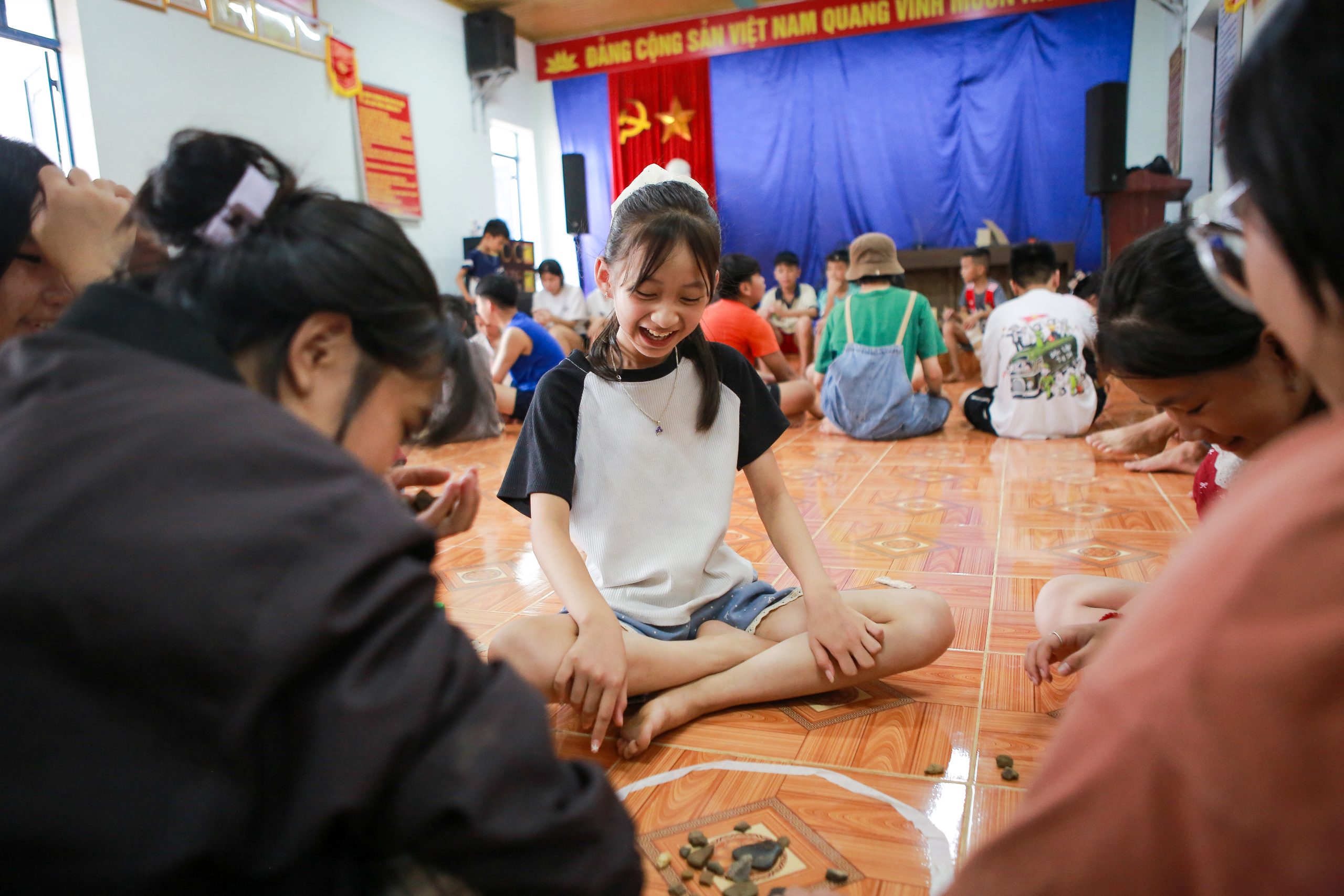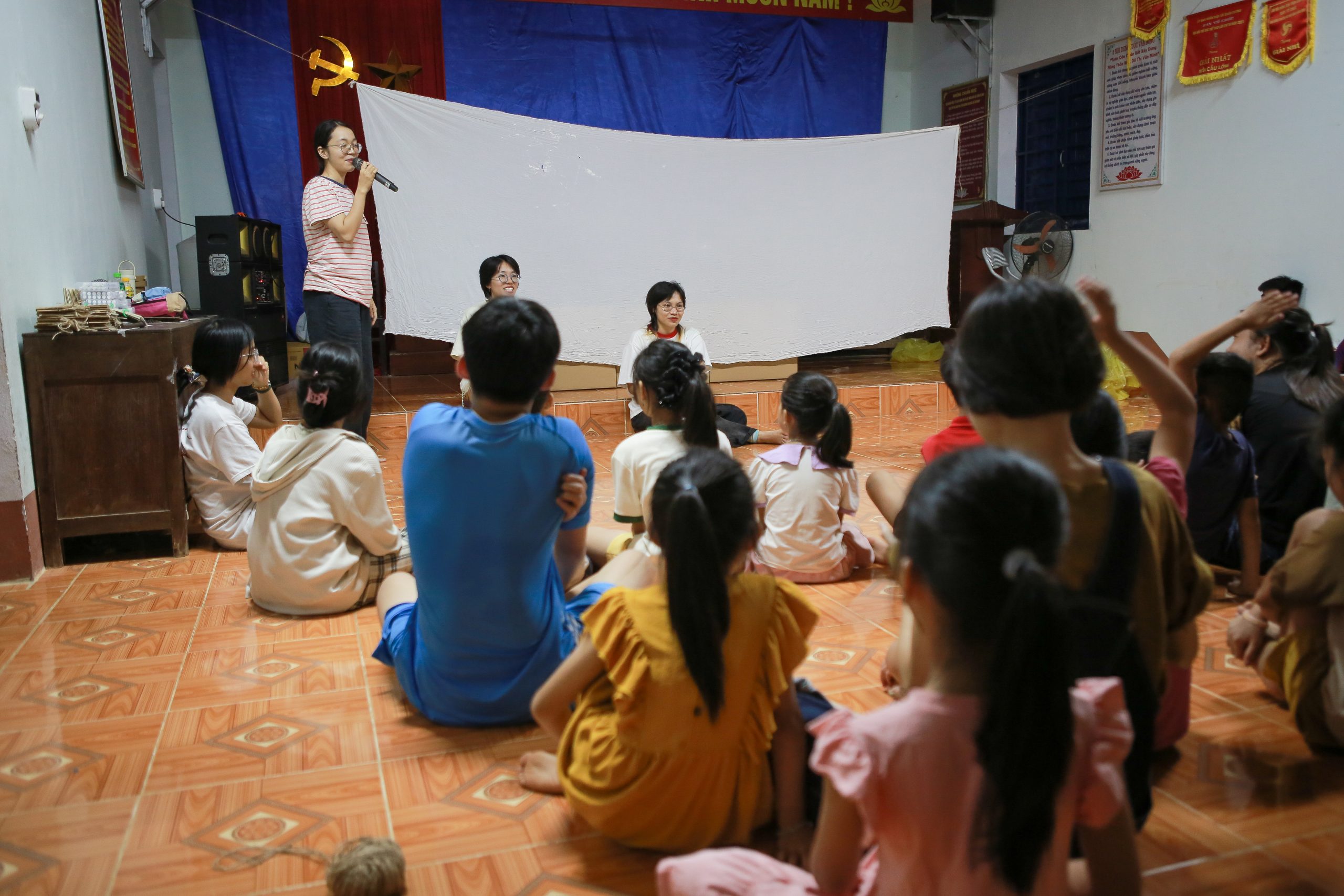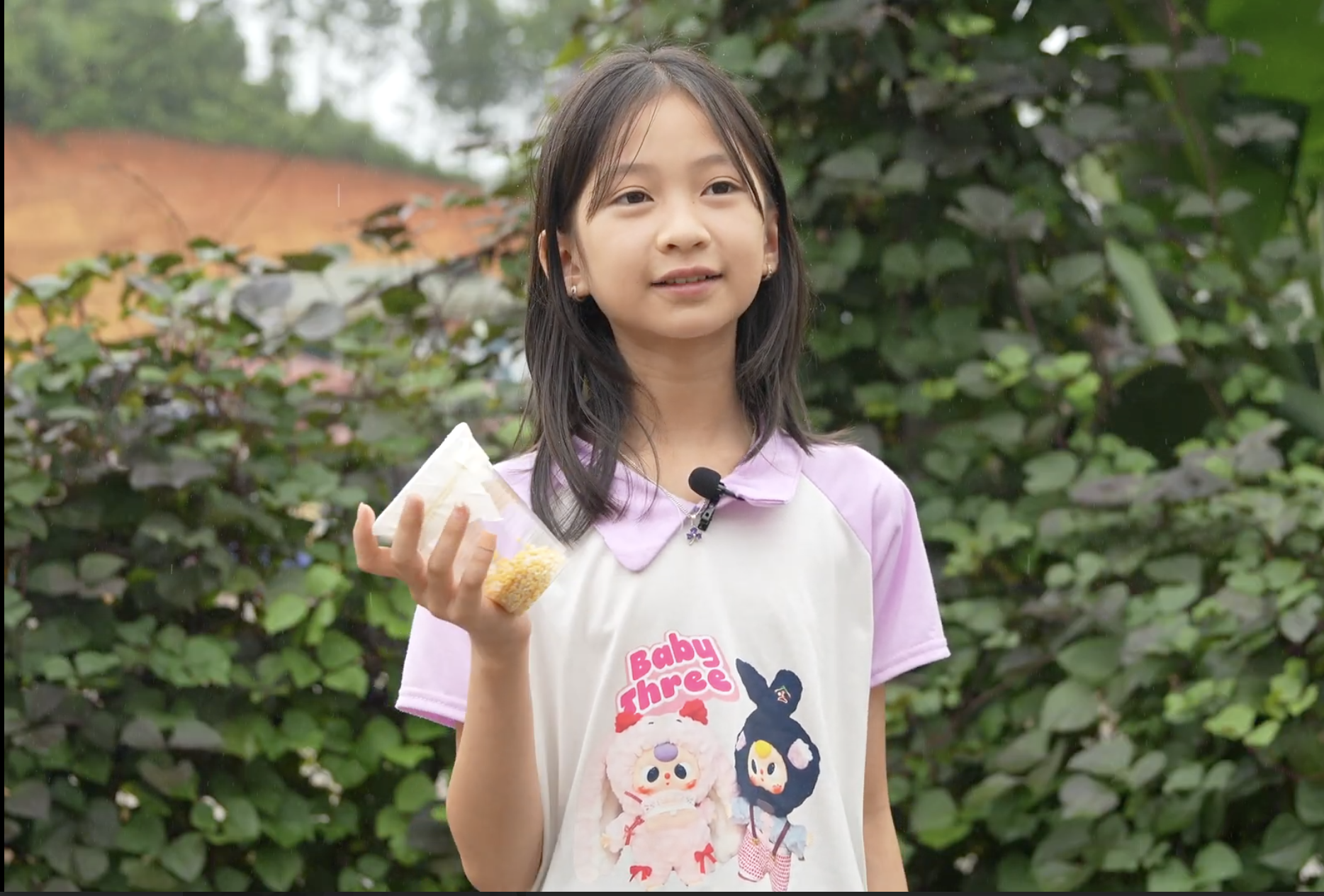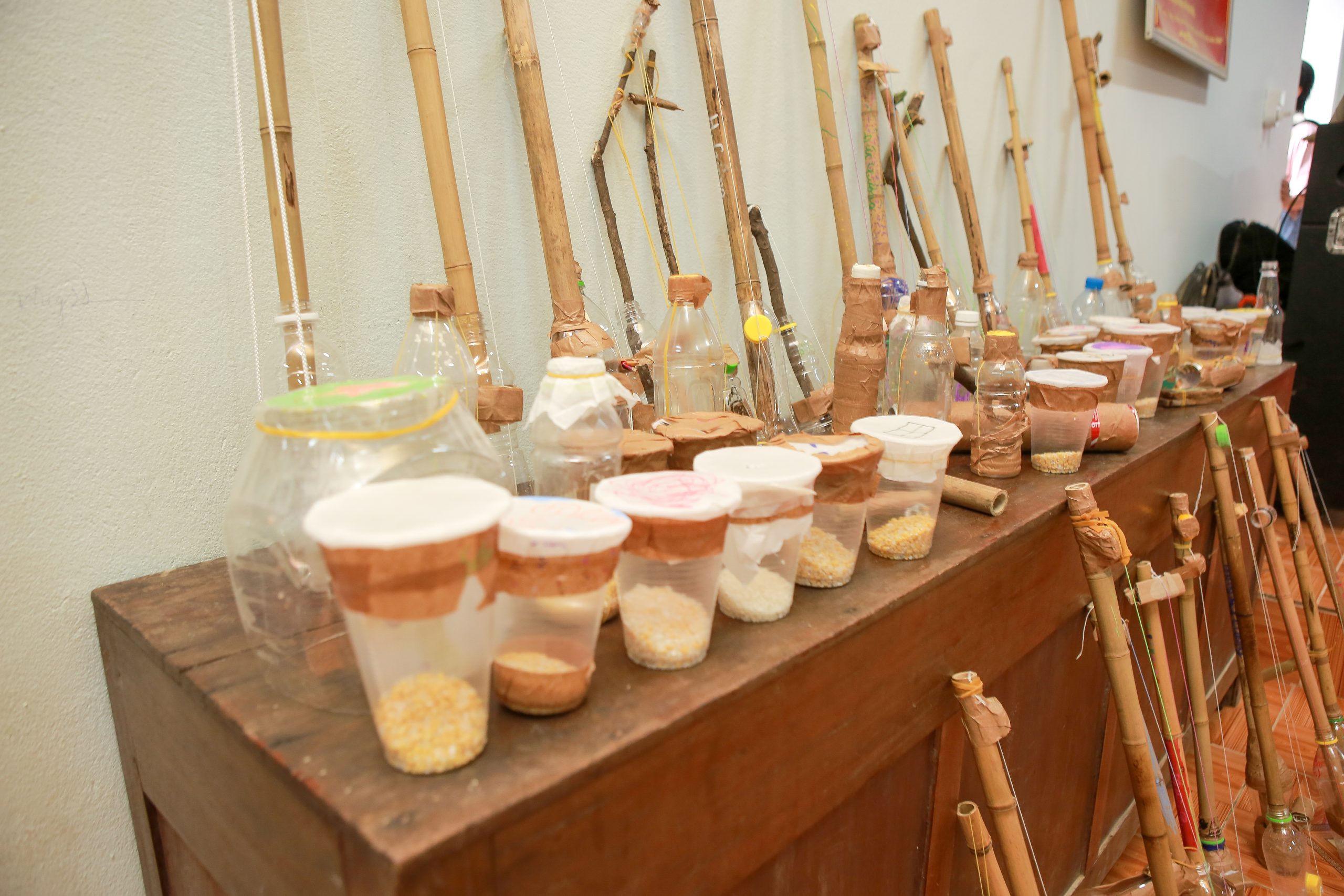Creativity Sprouting from Local Materials: Thu’s Story
In Na Ri district, Bac Kan province (now Xuan Duong commune, Thai Nguyen province), 10-year-old Thu grew up where mass-produced toys are scarce and costly. Summers meant helping her mother sweep the yard and pick vegetables; free moments led to the village stream. “On days when the water rises high it’s dangerous—I don’t dare go near,” she recalls.
In early August 2025, Thu joined “Chơi Rì,” an initiative by Canh Dieu Viet Nam and Picenza Group. Guided by artists, children first walked the village to gather dry leaves and twigs—materials found across forests, gardens, and fields. “Seeing a long table laid out with cardboard, dried leaves and twigs, paper and colored pens, I felt very happy and excited,” Thu says. The room buzzed as more than thirty children from the commune dove into their creations.

Thu playing joyfully with her friends
Thu chose cardboard and branches to model her house. “I made a house with a row of trees leaning as if after a storm,” she explains. True to the project’s purpose—igniting creativity from the familiar—“Chơi Rì” encourages children to observe their own lives and transform local materials into play, so that play becomes learning and a way to tell environmental stories.
During the shadow-puppet session, lights cast large silhouettes onto a white screen. “It felt both scary and very exciting,” Thu says. She realized a simple white cloth, a lamp, and a few handmade figures were enough to stage a captivating performance.

Thu and the other children before the shadow-puppet session
In the following days, Thu found that toys can come from clean waste. “I made a musical instrument from a used plastic cup; with a few pebbles or seeds inside, it becomes a maraca,” she says, shaking her new rattle.
The sessions also strengthened teamwork. “I used to work alone. Now I know how to divide tasks and share materials with friends.”

Thu and her hand-made rattle
The village cultural house has replaced the stream as Thu’s favorite place: safe, welcoming, and full of ideas. She has become less shy, speaks up more, experiments, and trusts her hands. “Now I can think of many games from things that are easy to find around me,” she smiles.

The musical instruments made by the children
For Thu, “Chơi Rì” is more than making toys—it’s speaking through play about home, storms, and the village stream. In the project’s spirit, each creation becomes a child’s “cultural–social language,” reflecting daily life, questioning environmental change, and connecting people, community, and nature.



